Podcast: Rocket Lab Shuts Down Archimedes Rumors
If you missed this weekend’s Twitter space community drama around Archimedes, (lucky you - it was dumb) I’ve generated a short 5 minute podcast that recaps the whole thing.
If you missed this weekend’s Twitter space community drama around Archimedes, (lucky you - it was dumb) I’ve generated a short 5 minute podcast that recaps the whole thing.
There was a bit of online drama this weekend as some random Twitter user started making unsubstantiated claims about Rocket Lab’s Archimedes development. This is pretty typical of the silly tribalism that defines the space community on Twitter these days but Peter Beck and crew silenced it almost immediately by dropping a long awaited Archimedes video.

Which also led to this informative exchange (for you engine nerds out there):

So, bottom line, engine testing is proceeding well. In fact, I think people are overlooking Rocket Lab’s impressive ability to rapidly iterate here. This highlights comments Beck made earlier about Rocket Lab’s investment in building out mature manufacturing capabilities for Archimedes at the start of its development. That is clearly already paying off.
I fed Claude Sonnet 3.5 Rocket Lab’s latest earnings presentation and asked it to analyze the results.
Rocket Lab has released its Q2 2024 earnings report, revealing significant growth and progress across multiple fronts. This quarter marks a pivotal moment for the company, demonstrating its increasing prominence in the commercial space sector and its ambitions to become a fully integrated end-to-end space company.
The standout figure from this earnings report is Rocket Lab’s record-breaking quarterly revenue of $106 million. This represents a substantial 71% year-on-year increase and a 15% quarter-on-quarter growth. Such impressive financial performance underscores Rocket Lab’s expanding market share and the increasing demand for its services in both launch and space systems segments.
The company’s backlog, standing at $1.067 billion, further reinforces its strong market position and future revenue potential. This growing backlog, up 5% from the previous quarter, indicates sustained customer interest and confidence in Rocket Lab’s capabilities.
Rocket Lab’s Electron rocket continues to cement its position as the leader in the small launch market. In a year marked by launch anomalies and delays across the industry, Electron has maintained its reliability and launch cadence. The rocket accounted for 64% of all non-SpaceX orbital U.S. launches in 2024 so far, becoming the third most frequently launched rocket globally in 2024.
The company has demonstrated Electron’s versatility and precision through various missions, including back-to-back NASA launches within 11 days, tailored constellation deployments, and complex missions like space debris removal demonstrations. These achievements highlight why satellite operators are willing to pay a premium for Electron’s services.
Rocket Lab has also secured significant new contracts, including a 10-launch agreement with Synspective and multiple launches for other commercial constellation operators. These multi-launch contracts underscore the growing demand for reliable small satellite launch services in the new space economy.
While Electron continues to dominate the small launch market, Rocket Lab is making steady progress on its Neutron rocket, aimed at addressing the medium launch market. The company highlights the strong and growing demand for medium-lift launch services, with projections of over 10,000 satellites needing launch services by 2030 from constellations alone.
Neutron’s development appears to be on a faster timeline compared to other new medium-lift rockets in development. Rocket Lab reports that flight hardware is in production and qualification for 100% of the vehicle. Key milestones include successful hot fire tests of the Archimedes engine, production of structural components, and ongoing construction of launch infrastructure.
The company’s vertical integration strategy is evident in Neutron’s development, with in-house production of major components and the establishment of automated composite production capabilities. This approach could potentially give Rocket Lab a competitive edge in terms of cost and production speed as Neutron enters service.
Rocket Lab’s Space Systems segment is increasingly becoming a major revenue driver for the company. With over $720 million in contract value for satellites in development, production, and operation, this segment is diversifying Rocket Lab’s revenue streams and positioning it as more than just a launch provider.
Notable achievements in the Space Systems segment include:
Completion of twin satellites for NASA’s Mars ESCAPADE mission, showcasing Rocket Lab’s ability to deliver complex spacecraft on time and on budget.
Progress on constellation production for major contracts like Scorpius (18 spacecraft for the Space Development Agency) and Thunder (17 spacecraft buses for Globalstar).
Introduction of the next-generation Advanced Satellite Dispenser (ASD), demonstrating ongoing innovation in satellite deployment technology.
Potential expansion of space solar manufacturing capabilities, supported by proposed federal and state incentives including CHIPS Act funding.
While Rocket Lab’s revenue growth is impressive, the company still faces challenges in achieving profitability. The Q2 report shows a non-GAAP free cash flow of -$28.3 million and an adjusted EBITDA loss of $21.2 million. However, these figures represent only slight increases from the previous quarter, despite significant revenue growth, suggesting improving operational efficiency. Importantly, Rocket Lab maintains a strong liquidity position with $546.8 million in cash, cash equivalents, marketable securities, and restricted cash at the end of Q2 2024.
The company’s Q3 2024 outlook projects continued revenue growth, with expected revenue between $100 million to $105 million. This guidance indicates confidence in sustained demand for both launch and space systems services. With its substantial cash reserves, Rocket Lab appears well-positioned to fund its ongoing operations and strategic initiatives while working towards profitability.
Rocket Lab’s Q2 2024 earnings report showcases a company expertly executing its strategy to become a comprehensive space services provider. By leveraging its proven Electron rocket, making significant strides in the Neutron program, and expanding its space systems capabilities, Rocket Lab is solidifying its position as a key player in the evolving new space industry.
The company’s vertical integration approach is a cornerstone of its success, setting it apart from many competitors. This strategy has enabled Rocket Lab to de-risk its operations across both launch and spacecraft manufacturing. The successful development and testing of the Archimedes engine for Neutron, for instance, demonstrates the company’s ability to innovate and control critical technologies in-house.
Rocket Lab’s focus on both launch and spacecraft manufacturing has created a synergistic ecosystem that enhances its competitive edge. As the demand for space-based services continues to grow, the company is strategically positioned to capture a significant share of this expanding market.
The coming years present exciting opportunities for Rocket Lab as it progresses towards its vision of becoming an end-to-end space company. With each successful Electron launch, advancement in the Neutron program, and expansion of its space systems capabilities, Rocket Lab is systematically reducing risks and strengthening its market position.
For industry observers and investors, Rocket Lab’s progress serves as a compelling example of successful strategic execution in the commercial space sector. The company’s achievements highlight the immense potential in building a comprehensive space services business in the 21st century, showcasing how innovative approaches and vertical integration can drive success in this dynamic industry.

Peter Beck just shared an update on the company’s progress with Archimedes. The tweet provides a glimpse into the intricate and methodical process that precedes a full stage hot fire. This milestone underscores Rocket Lab’s commitment to precision engineering and the challenges inherent in developing reliable rocket propulsion systems.
As Beck’s tweet reveals, Rocket Lab has successfully completed a pre burner ignition and run. This phase involves the initial ignition of the engine’s pre burner, a critical component responsible for driving the turbopumps that feed propellants into the main combustion chamber. The successful ignition indicates that the pre burner is functioning correctly, a foundational step in the overall engine testing sequence.
The next phase focuses on tuning the propellant timings. This process, expected to take a week or more, involves adjusting the precise moments when propellants are introduced and ignited within the engine. These adjustments are crucial for ensuring that the engine operates efficiently and safely. The sensitivity of these timings to start-up transients and other variables necessitates meticulous attention to detail and extensive testing.
Beck emphasizes the engine’s sensitivity to start-up transients—rapid changes in conditions that occur when the engine starts. These transients can significantly impact the performance and stability of the engine. Understanding and mitigating their effects is essential for achieving a smooth and reliable engine start-up.
Characterizing these transients involves detailed measurements and analysis of various parameters, including pressure, temperature, and flow rates. Engineers use this data to refine the engine’s design and control systems, ensuring that it can handle the dynamic conditions of start-up and operation.
The ultimate goal of this testing phase is to conduct a full stage run, where the main valves are opened, and the engine operates at its full capacity. This stage is critical for verifying the engine’s performance under real-world conditions and ensuring that it meets all design specifications.
Achieving this milestone requires a comprehensive understanding of the engine’s behavior across a range of operating points. This includes not only start-up transients but also steady-state operation and response to various control inputs. The characterization process, therefore, involves extensive data collection and iterative testing to fine-tune the engine’s performance.
Rocket engine development is a complex and iterative process that requires a deep understanding of fluid dynamics, thermodynamics, and materials science. Each component of the engine must be carefully designed and tested to ensure that it can withstand the extreme conditions of rocket propulsion.
Rocket Lab’s approach, as evidenced by Beck’s update, highlights the importance of systematic testing and refinement. By focusing on detailed characterization and tuning, the team ensures that each phase of development builds on a solid foundation of validated performance.
Rocket Lab’s recent progress in pre burner ignition and tuning marks a significant step towards achieving a full stage run. The detailed and methodical approach to engine development underscores the complexities involved and the importance of precision in rocket propulsion systems. As the team continues to refine their engine, they move closer to realizing their goal of reliable and efficient Neutron launch capabilities.

This tweet from Peter Beck indicates that Rocket Lab has successfully completed ignition system tests as they close in on a full hot fire of Archimedes. This is an important step in Archimedes' development process, as the ignition system is a critical component that must function reliably to ensure a successful engine test.
Based on the information provided, it seems the team is making steady progress towards their goal of a hot fire test. A recent tweet by Jeff Foust suggests that it could occur in the next ten days or so. The successful ignition system tests are a positive sign, as they demonstrate the team’s ability to integrate and validate key subsystems of the rocket engine.
The fact that the last two testing images shared by the team were taken at night suggests the team has been working around the clock to advance their progress. This level of dedication and commitment is crucial in the fast-paced world of rocket development, where every minute counts towards achieving key milestones.

I asked both Claude 3.5 and ChatGPT to weigh in on this and this is what they had to say:
The “spin primes” phase is an important step in rocket engine testing, occurring before full hot fire tests. It’s part of the preparatory stages leading up to a complete engine firing. Here’s a brief overview:
Purpose: Spin primes test the turbopumps that deliver propellants to the combustion chamber. The pumps are spun up without igniting the engine.
Process: Propellants flow through the system, but at lower pressures and temperatures than a full hot fire. This checks for proper operation of valves, seals, and pumps.
Position in testing sequence:
Proximity to hot fire: Spin primes are typically conducted days or weeks before the first hot fire test, depending on the testing schedule and results.
Spin primes are crucial for verifying system readiness and identifying potential issues before progressing to more demanding and risky hot fire tests. They help ensure the propellant delivery system functions correctly under more realistic conditions.
The “spin primes” phase is a critical step in the testing process of rocket engines. This phase involves spinning the engine’s turbo pumps to ensure they are functioning correctly and can achieve the necessary speed and pressure to deliver fuel and oxidizer to the combustion chamber. Here’s a breakdown of its place in the overall testing process and its proximity to the hot fire test:
Component Testing: Individual components of the engine, such as the turbo pumps, injectors, and combustion chambers, are tested to ensure they work correctly on their own.
Assembly and Integration: The tested components are assembled into a complete engine. Integration checks are conducted to ensure everything fits and works together as expected.
Cryogenic Testing: The engine is tested with cryogenic fluids to check for leaks, proper flow rates, and the correct operation of components at extremely low temperatures.
Spin Primes: The turbo pumps are spun up to operational speeds without igniting the engine. This test ensures that the pumps can reach the required speed, generate the necessary pressure, and operate smoothly. It also checks for any anomalies that might occur during pump operation.
Wet Dress Rehearsal: The engine is loaded with fuel and oxidizer, and the systems are put through a full operational cycle without actually igniting the engine. This step ensures that all systems are ready for a hot fire test.
Hot Fire Test: The engine is ignited and run at full operational conditions. This is the critical test that demonstrates the engine’s performance and reliability under actual operating conditions.
The spin primes phase is one of the final steps before the hot fire test. It is usually conducted shortly before the wet dress rehearsal and the hot fire test. The successful completion of spin primes indicates that the engine’s turbo pumps are functioning correctly and the system is close to being ready for a hot fire test. Typically, only a few tests remain after spin primes, making it a significant milestone in the overall testing process.
In summary, spin primes are crucial for validating the turbo pumps' functionality and are one of the last steps before the hot fire test, indicating that the engine is nearly ready for a full operational test.
Rocket Lab is now just days away from its 50th Electron launch. Designed to deliver payloads of up to 300 kg (661 lbs) to low Earth orbit, the Electron caters to the growing demand for small satellite launches. Achieving flexibility and innovation in a small launch vehicle is particularly challenging, often more so than with larger class launchers. Electron represents several groundbreaking innovations, and in recent years, Rocket Lab has made significant strides toward making the Electron partially reusable and adaptable for critical national security missions, solidifying its position at the forefront of the space industry.
A cornerstone of Rocket Lab’s innovation is the Rutherford engine. These engines are entirely 3D-printed, which allows for rapid manufacturing and cost reduction. The use of 3D printing technology enables the creation of complex geometries that would be difficult or impossible to achieve with traditional manufacturing methods. This innovation has significantly reduced the time and cost of engine production, making the Electron rocket both efficient and economical.
The Rutherford engines also feature electric turbopumps, a groundbreaking innovation in rocket design. Traditional rocket engines use gas-powered turbopumps to feed propellant to the combustion chamber. Rocket Lab has replaced these with battery-powered electric motors, simplifying the engine design and reducing costs. This unique approach allows for more precise control over the fuel flow and is the first instance of electric turbopumps being used in an orbital-class rocket.
The Electron rocket’s structure is made primarily of carbon composite materials. This lightweight yet strong material allows for significant weight reduction, increasing the rocket’s payload capacity. The use of carbon composites also streamlines the manufacturing process, as the rocket’s body can be fabricated in just two pieces. This material choice is crucial for reusability, as it enhances the durability and resilience of the rocket’s components.
The unique Photon kick stage is designed to provide precise orbital insertion for payloads, offering greater flexibility in mission design. This stage also serves as a platform for Rocket Lab’s own satellite missions. While not directly related to reusability, the Photon kick stage demonstrates Rocket Lab’s commitment to innovation and mission adaptability, which are essential for a sustainable and reusable launch system.
A significant milestone in Rocket Lab’s path to reusability was the successful reuse of a Rutherford engine. By recovering and refurbishing the engine from a previous mission, Rocket Lab demonstrated that critical components of the Electron rocket could be reused, paving the way for more sustainable and cost-effective launches.
The most critical step toward reusability has been the development of techniques for recovering the Electron’s first stage. Rocket Lab has successfully demonstrated the ability to recover the first stage using parachutes and ocean retrieval. This method, tailored for small launch vehicles, aims to significantly increase launch frequency and lower costs for customers.
An additional demonstration of Rocket Lab’s innovation and flexibility is the development of the High-Altitude Suborbital Testbed (HASTE). HASTE represents Rocket Lab’s ability to adapt and expand its technology for a variety of missions, providing a platform for high-altitude research and development. This testbed allows for rapid iteration and testing of new technologies, further enhancing Rocket Lab’s capabilities in the space industry.
Rocket Lab’s focus on innovation with the Electron rocket is crucial for the growing small satellite market. By integrating advanced technologies, reducing launch costs, increasing payload capacity, and offering greater mission flexibility, Rocket Lab continues to create new opportunities for satellite operators and researchers. As the demand for small satellite launches continues to grow, Rocket Lab’s advancements will play a key role in enabling a critical element of the space industry.
Stoke Space recently achieved a significant milestone by completing the first successful hot-fire test of their full-flow, staged-combustion (FFSC) rocket engine. Conducted on June 5, 2024, at their test site in Moses Lake, Washington, this engine is set to power the first stage of their fully reusable Nova medium-lift launch vehicle.
The test demonstrated the engine’s ability to ramp up to its target starting power level, producing the equivalent of 350,000 horsepower in less than one second. This FFSC engine, known for its high efficiency and performance, is designed to generate over 100,000 pounds of thrust at full power.
Stoke Space plans to continue refining the engine and vehicle design throughout 2024, with a targeted orbital test flight in 2025. This achievement follows their successful vertical takeoff and landing test of the second stage in September 2023, indicating rapid progress in their mission to create fully reusable rockets.
Rocket Lab has completed the first full assembly of its Archimedes engine, a 3D printed, reusable rocket engine designed for the company’s Neutron medium lift launch vehicle. Here are some key facts about the Archimedes engine:
The Archimedes engine test and development campaign is a key driver for Neutron’s first launch, which is now expected to occur no earlier than mid-2025. Rocket Lab has also completed carbon composite flight structures for Neutron’s fairing panels, Stage 1 and Stage 2 tanks, and the reusable Stage 1 structure. Infrastructure development also continues at Neutron’s dedicated launch site at Wallops Island, Virginia.
One of the reasons I aggregate the Neutron slides in posts like this one is that it helps quickly assess the scale and pace of development. Here’s a great example showing the state of the Archimedes engine in the late February investor update and then again today. That is a massive difference in just over two months.
February 27, 2024

And May 6, 2024
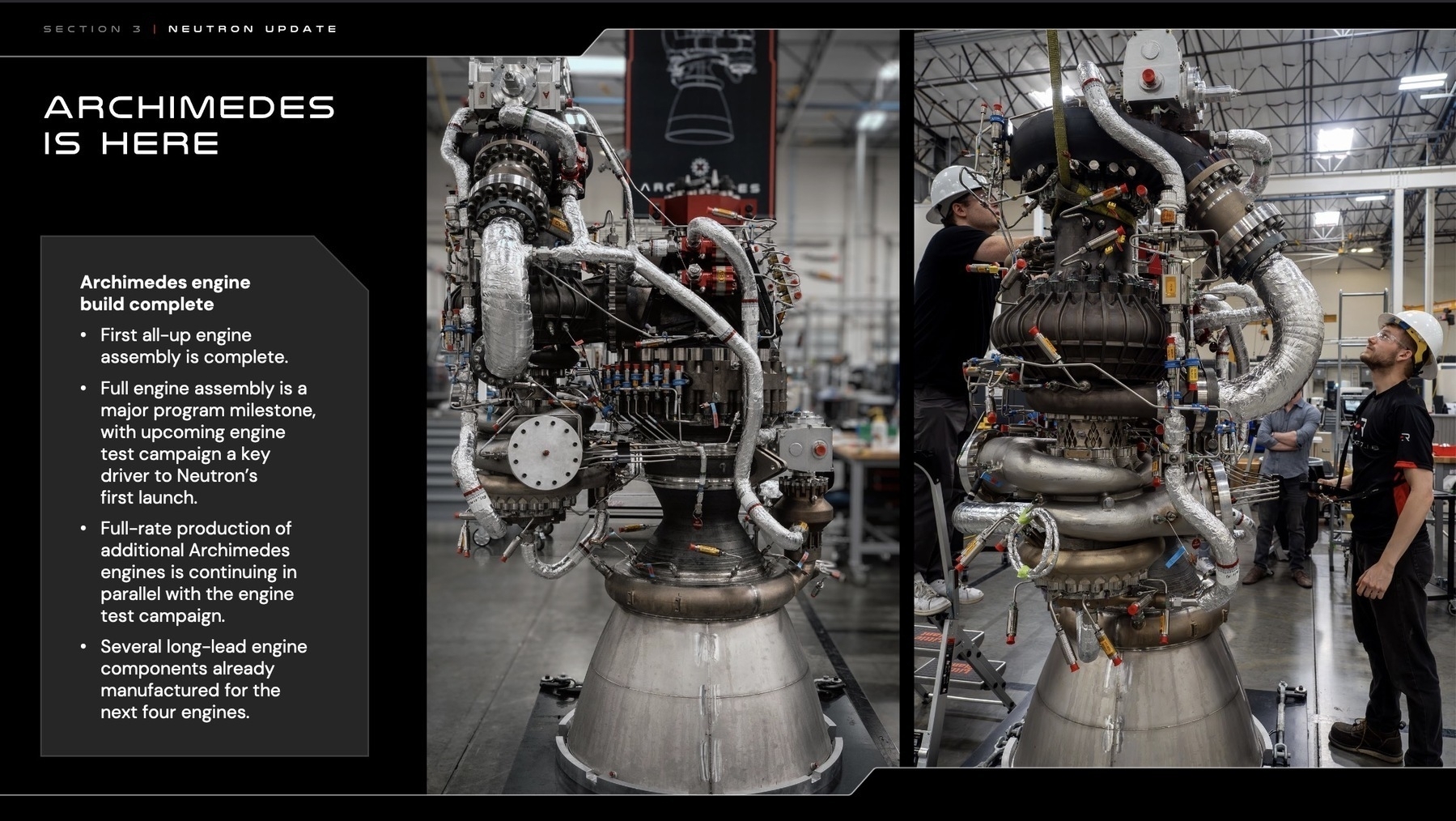
Rocket Lab has posted photos of Archimedes on the test stand at Stennis. I’ve highlighted the location (in green) on this Google earth view.
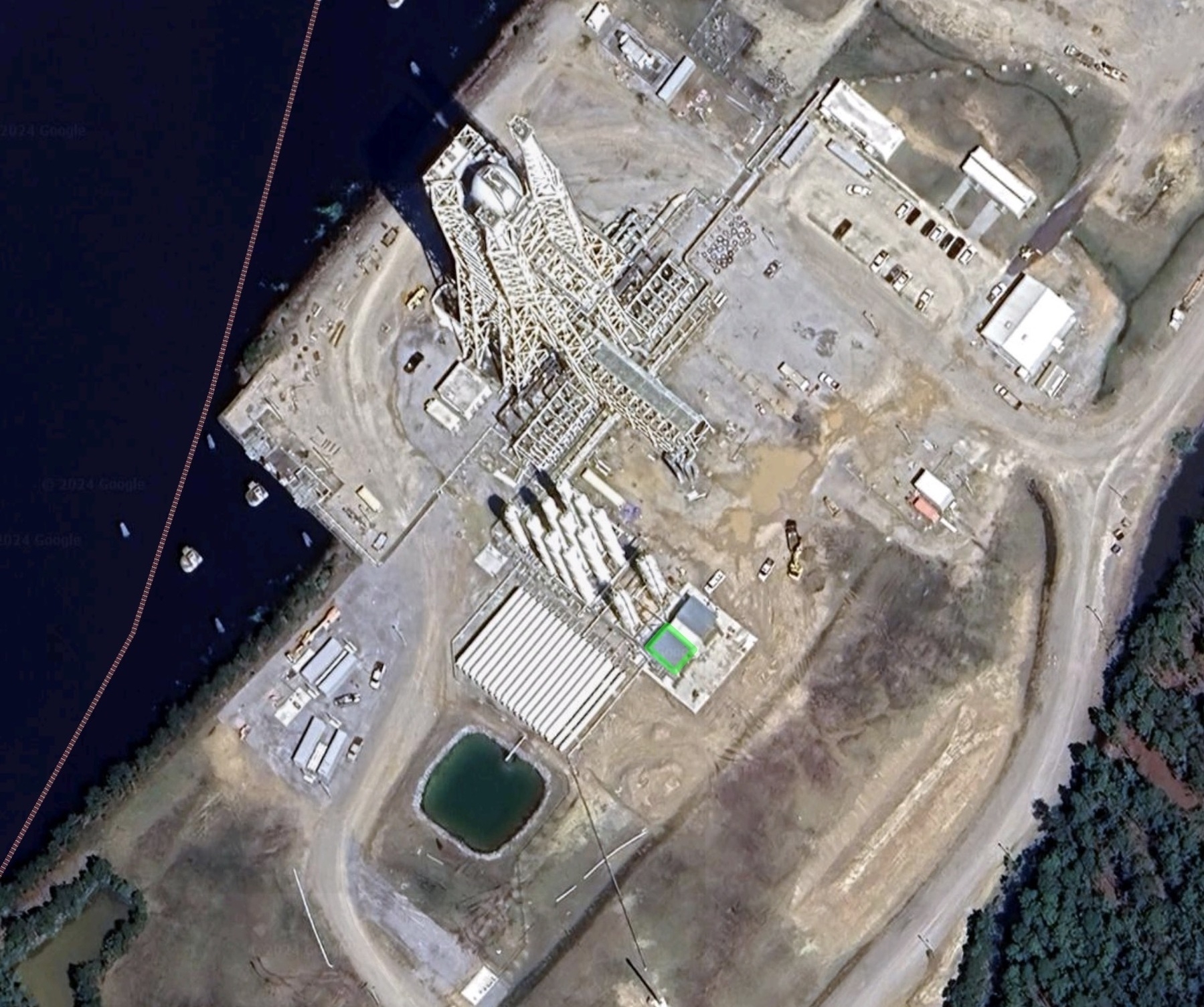

Rocket Lab, a leading small satellite launch provider, has announced a major milestone in its quest to make its Electron rocket the world’s first reusable small orbital launch vehicle. Here are the key points:
The company has made iterative modifications across multiple recovery missions to perfect the recovery process, including:
If the stage passes final acceptance and qualification testing, Rocket Lab will consider opportunities for reflying it in the new year.
This milestone marks an exciting step forward in Rocket Lab’s efforts to increase launch cadence and reduce costs through the reuse of Electron’s first stage. The payload for the potential reflight will be announced following the completion of final testing.
2024 is going to be an extremely busy year as Rocket Lab pushes to get Neutron on the pad by December. I may not be able to capture every update, but I will at least pull all the official slides and key tweets together in one place. You can also track other Neutron updates on the blog here. For the updates from 2021 through 2023 see this post.
October 27, 2024 | Madison Reidy’s Deep Dive on Neutron
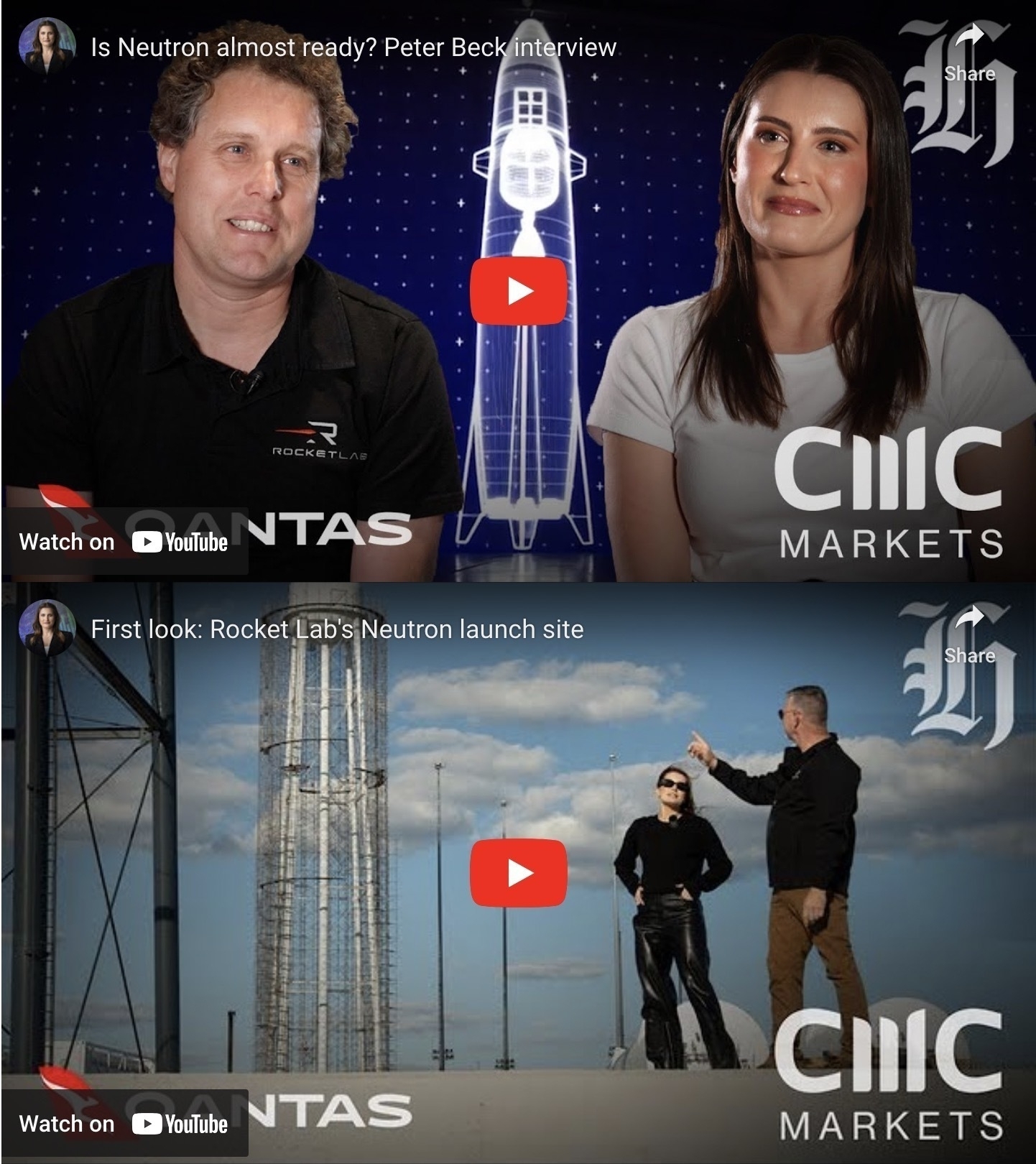
September 29, 2024 | Video and Tweets by Rocket Lab

August 15, 2024 | Tweet by Rocket Lab
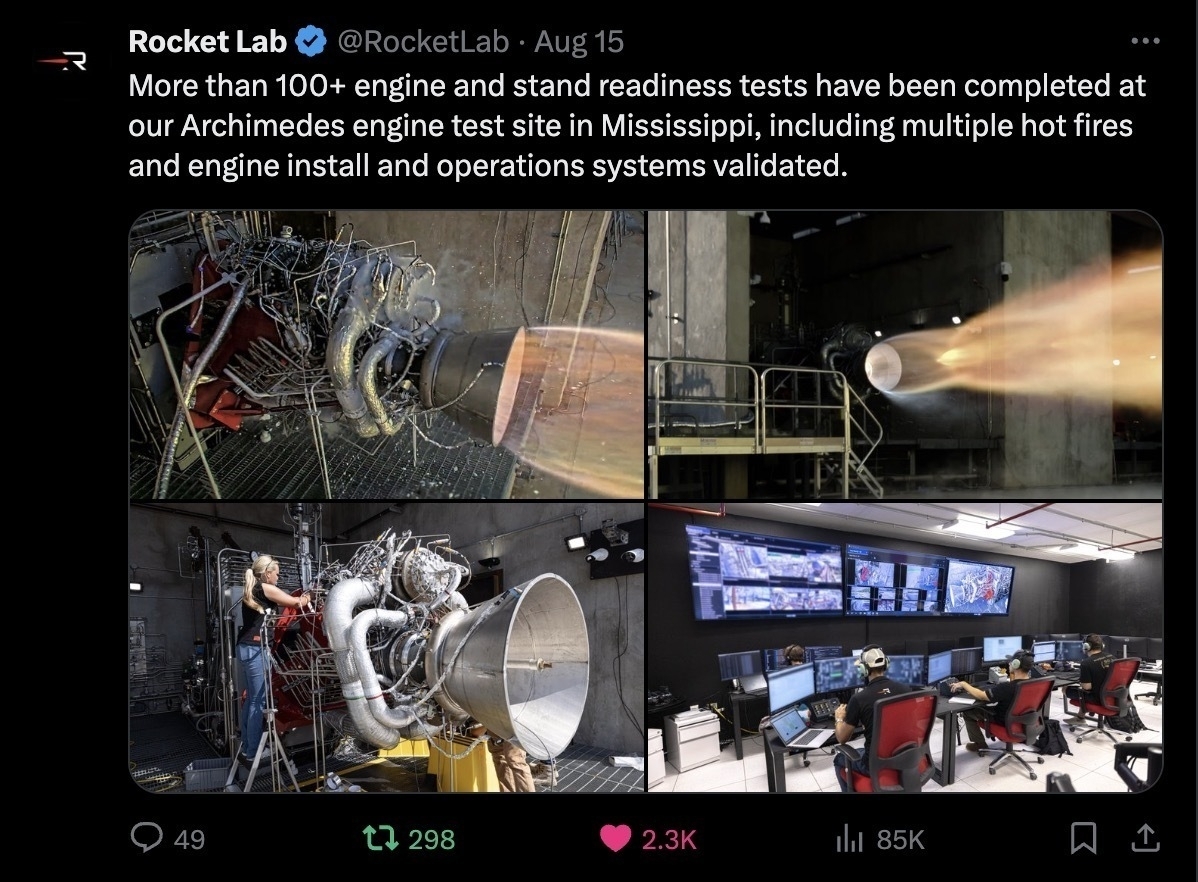
August 8, 2024 | Q2 2024 Investor Update
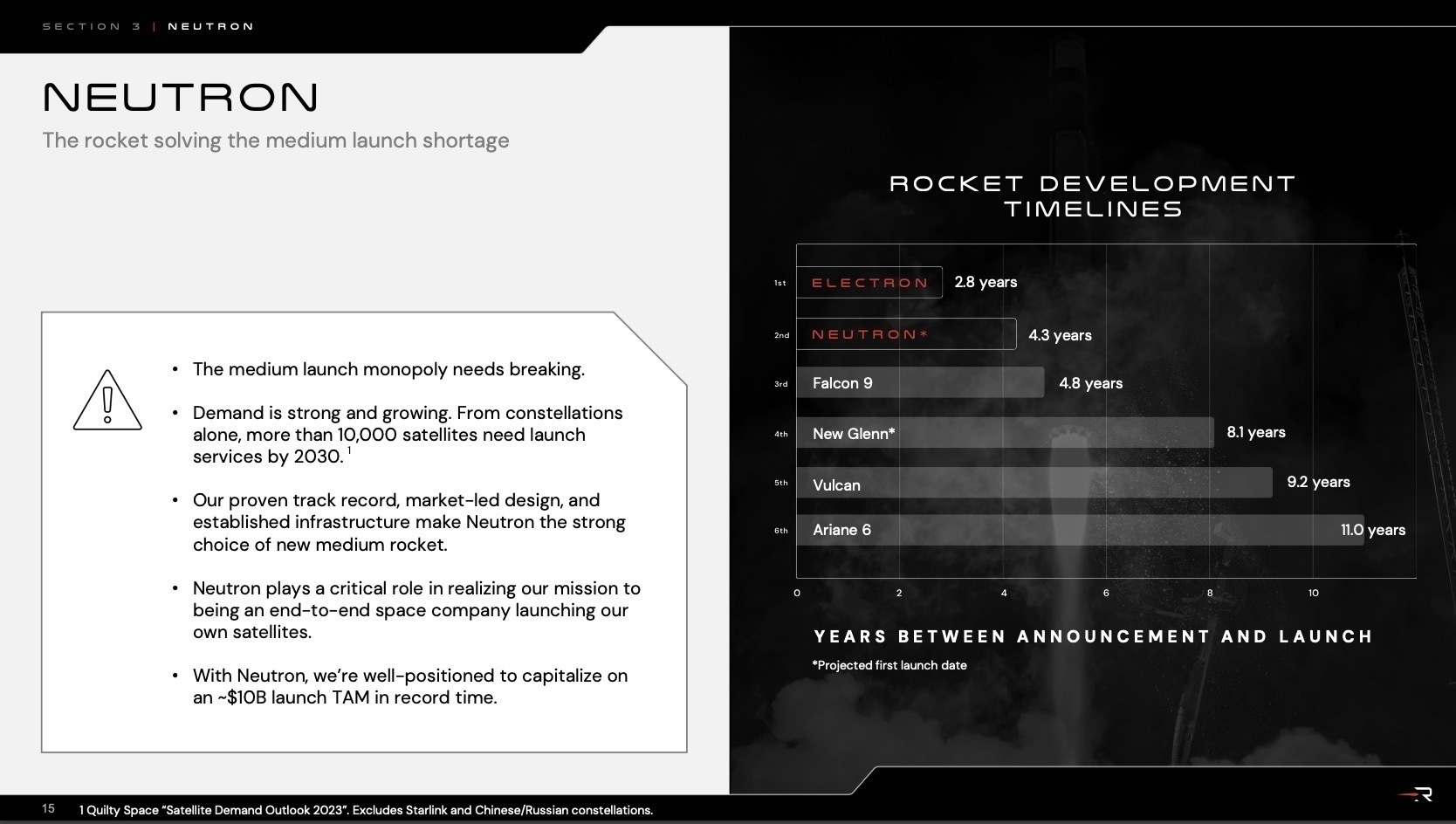

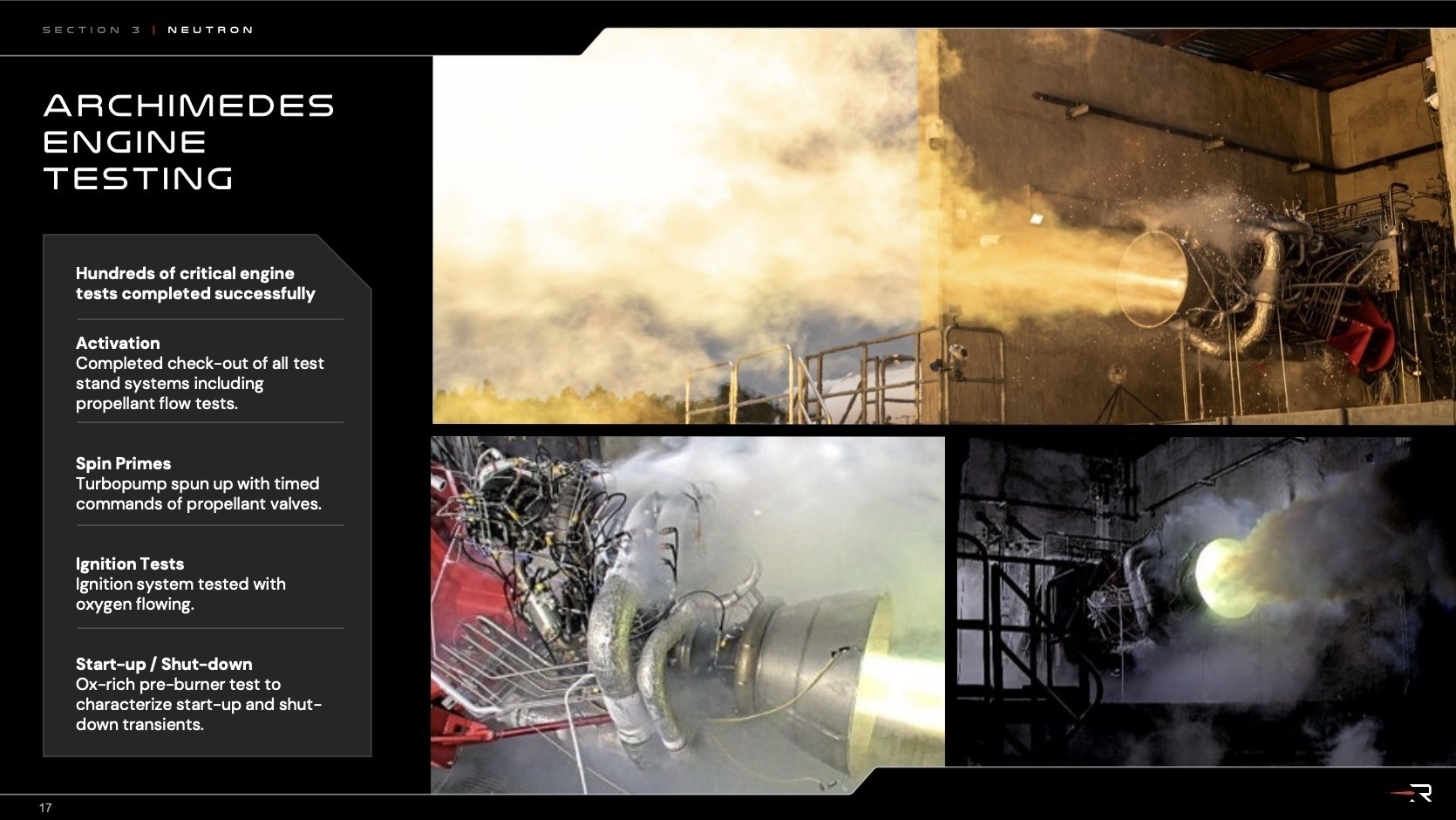
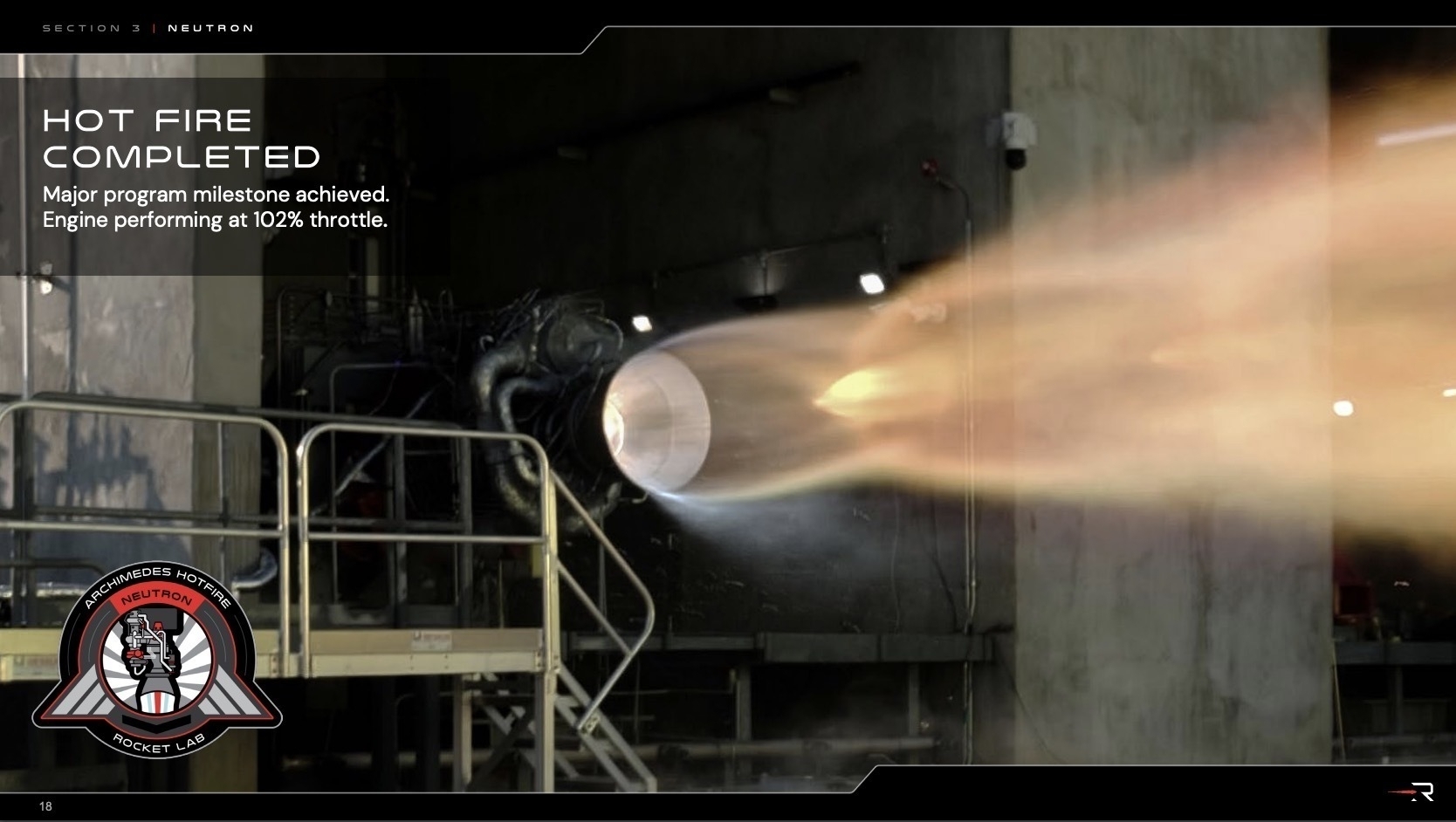
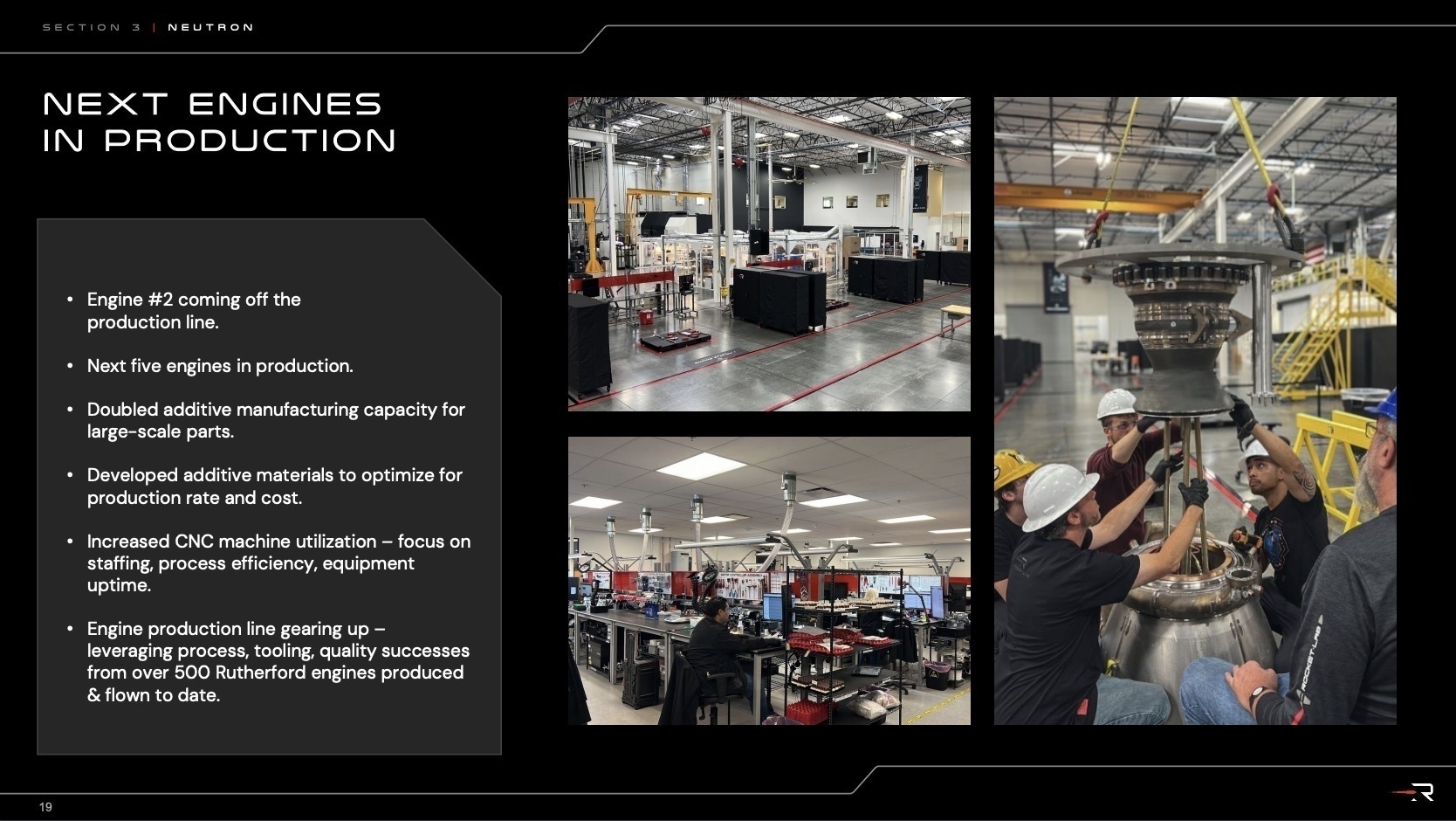
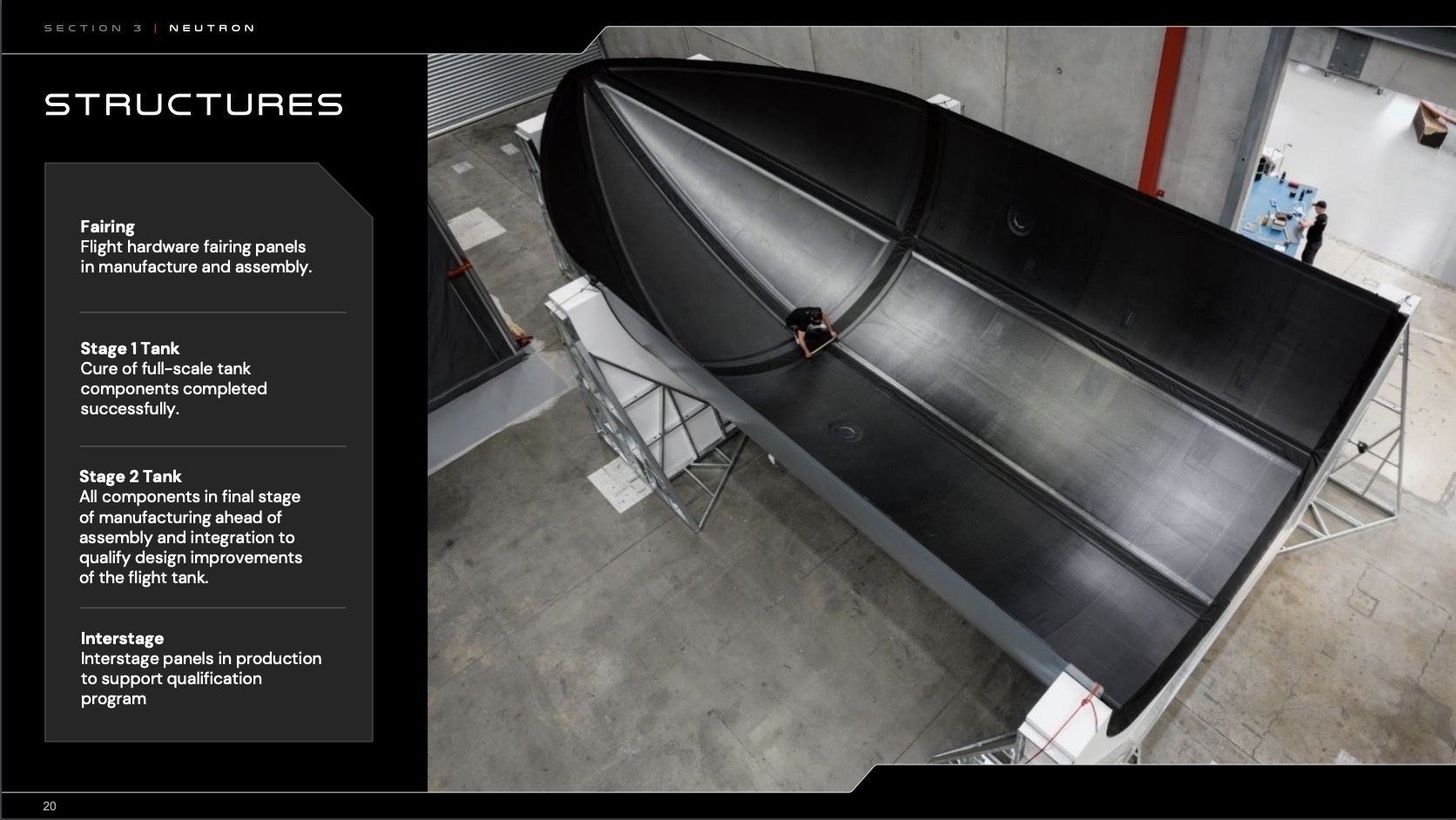
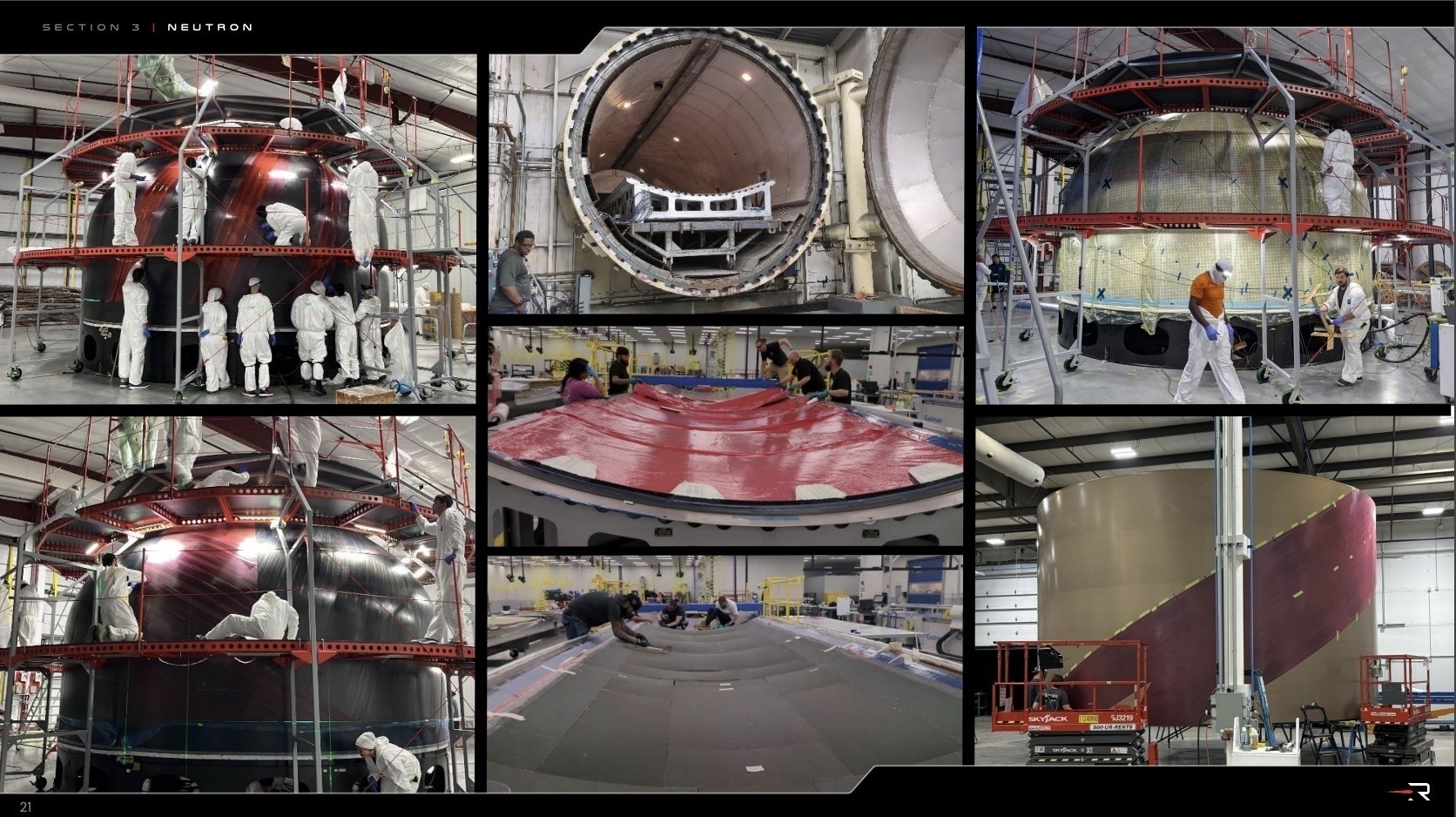
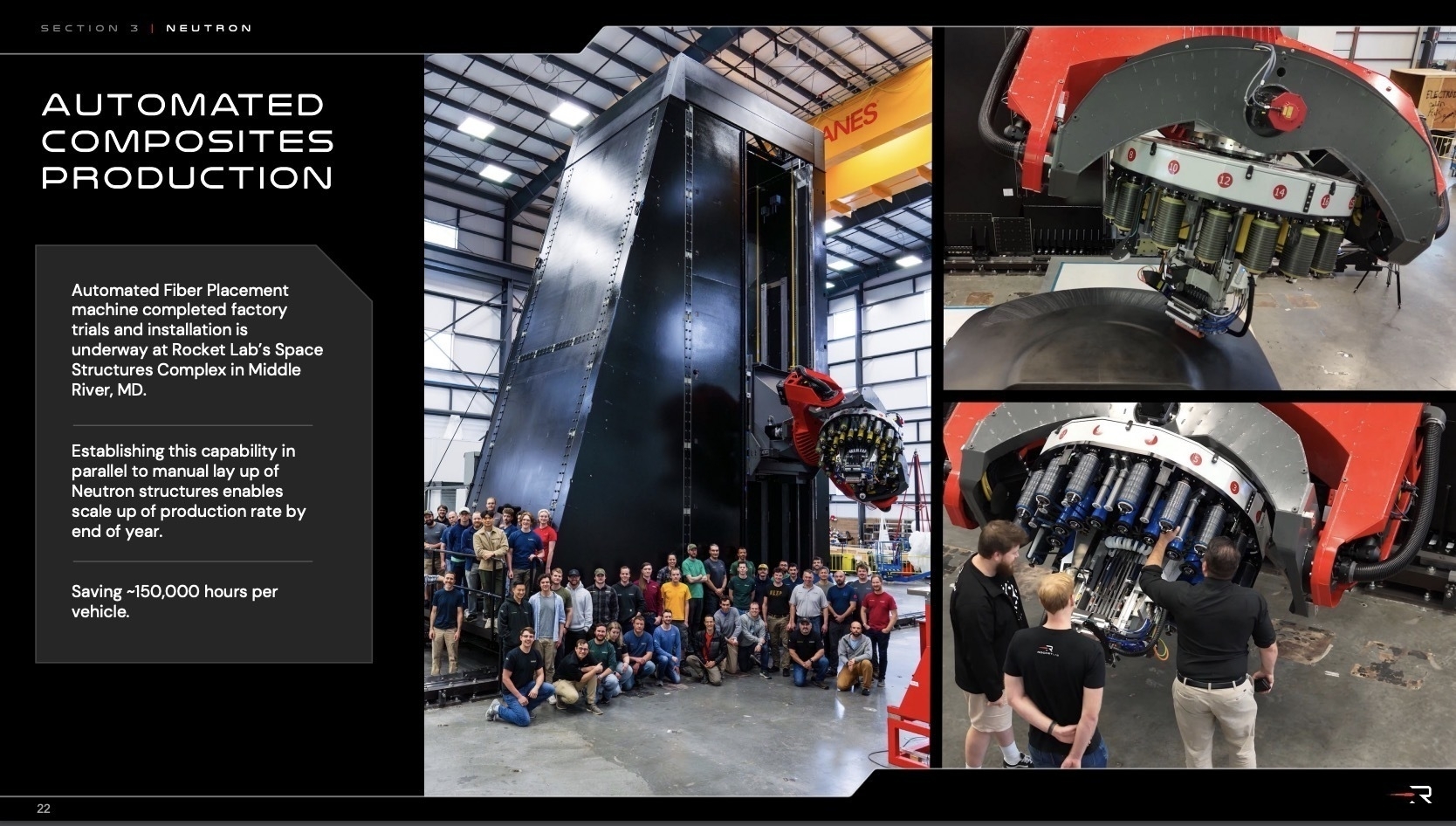
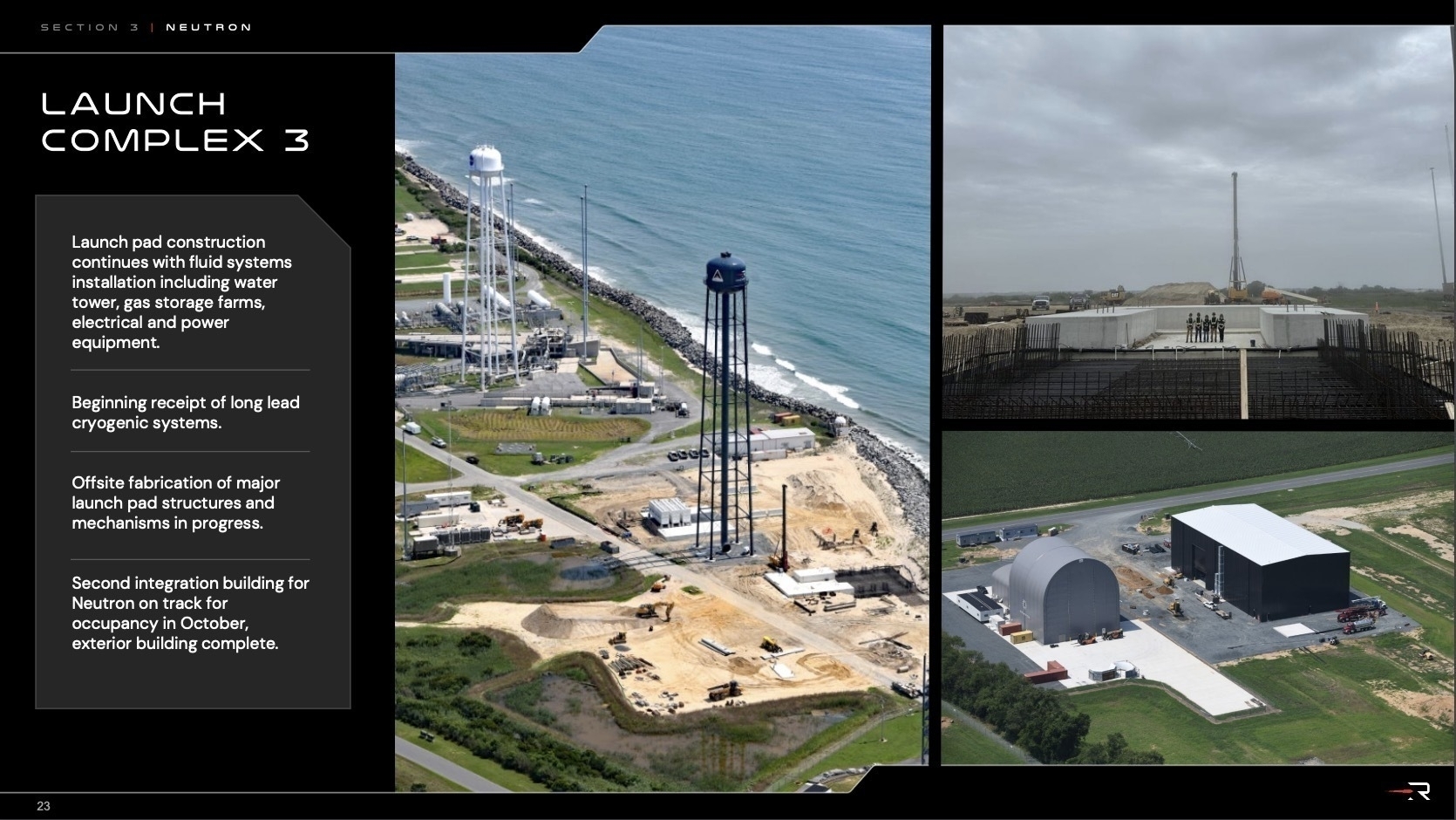
August 8, 2024 | Tweet by Peter Beck
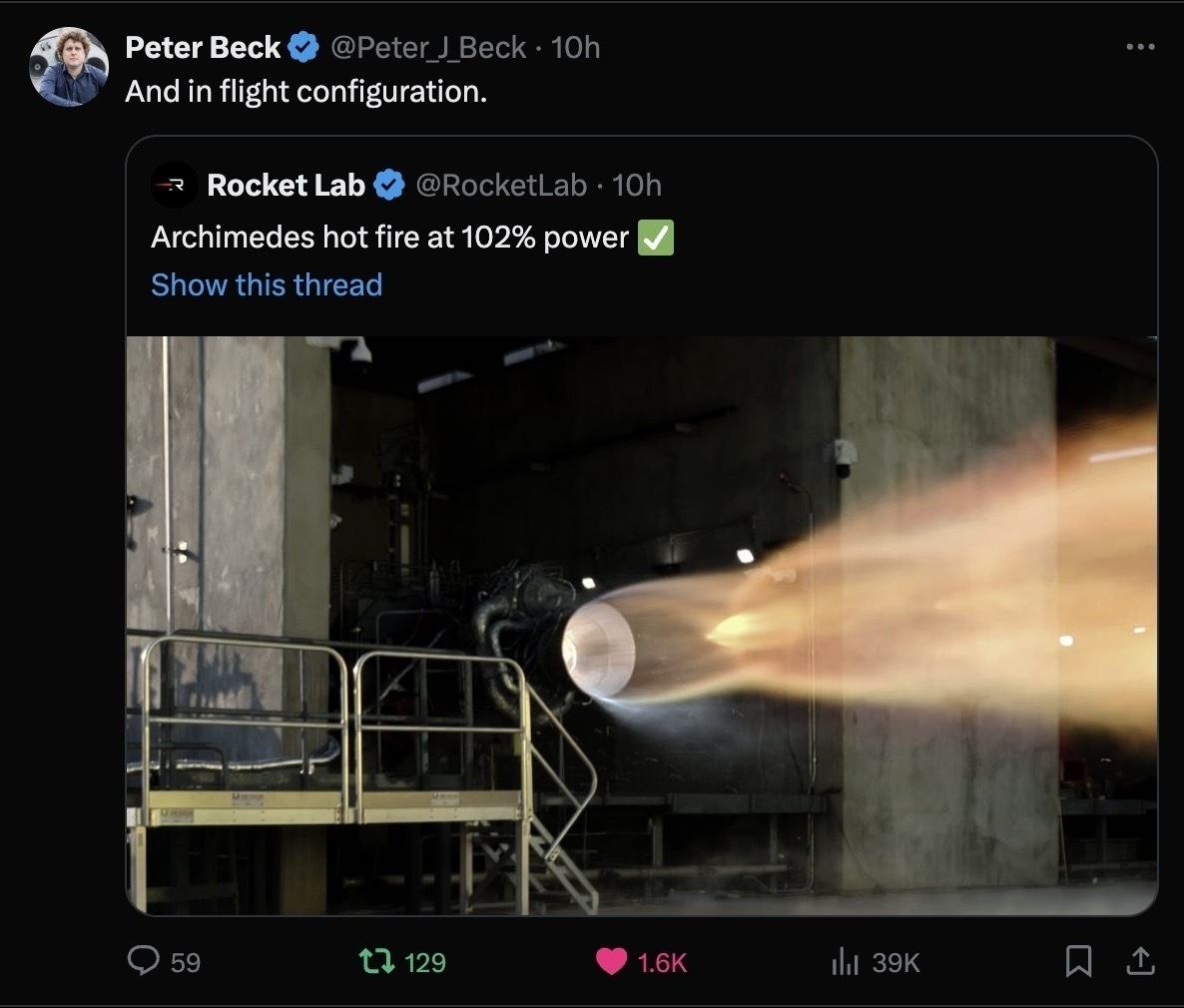
July 25, 2024 | Tweet by Rocket Lab

July 13, 2024 | Tweet by Peter Beck

July 3, 2024 | Tweet by Peter Beck

July 3, 2024 | Tweet by Peter Beck

June 11, 2024 | Tweet by Rocket Lab
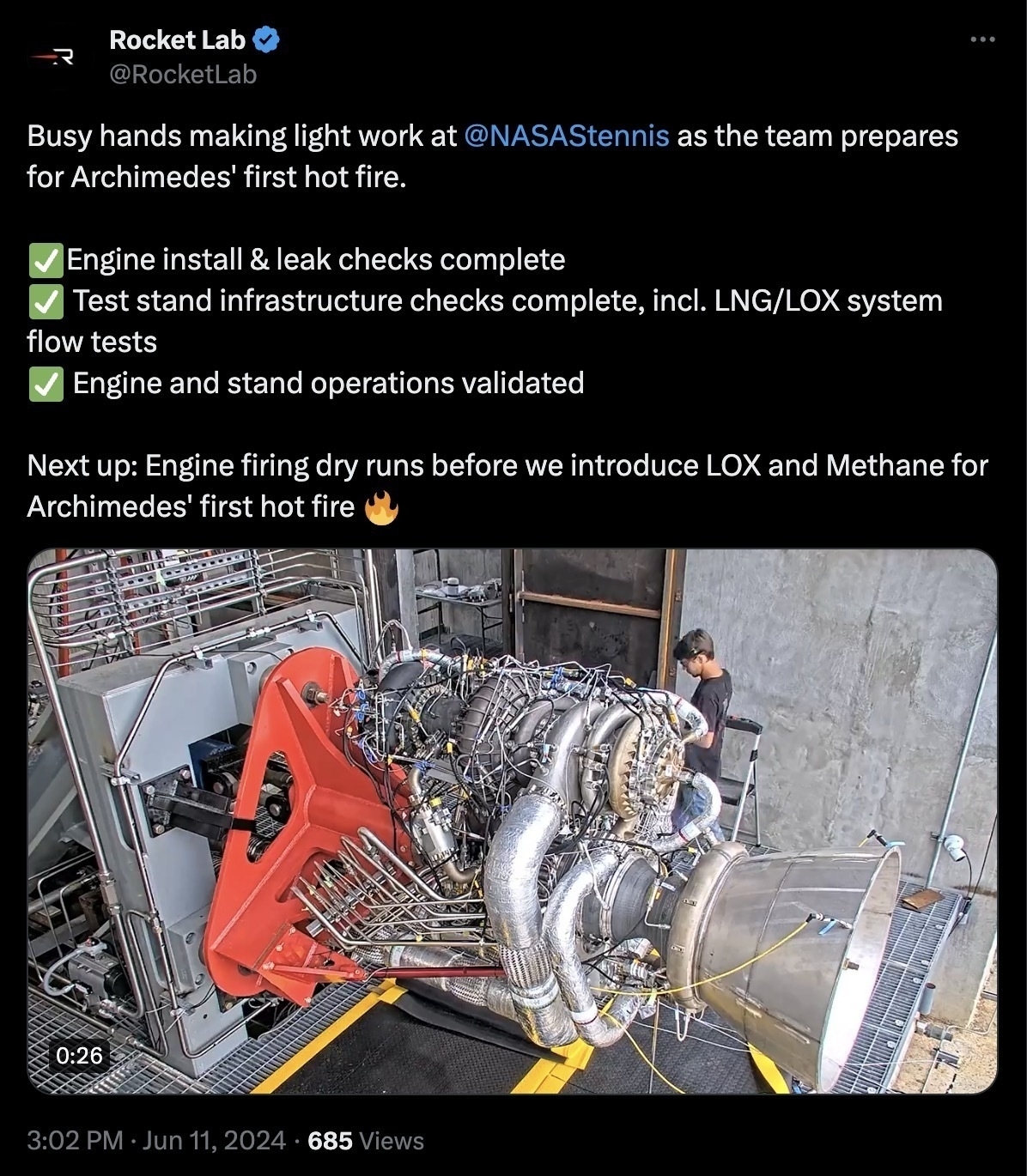
May 17, 2024 | Tweet by Rocket Lab
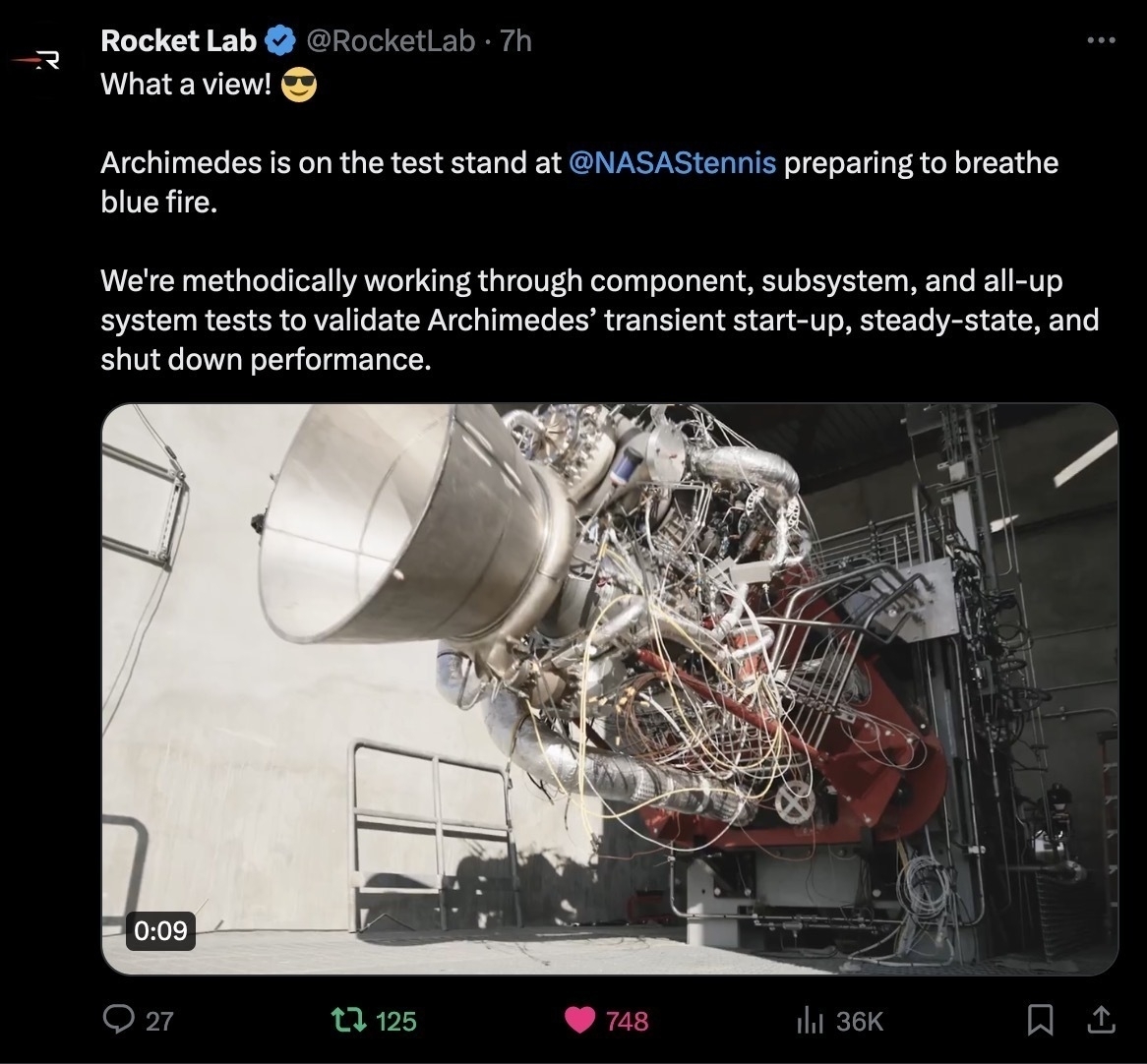
May 7, 2024 | Tweets by Rocket Lab
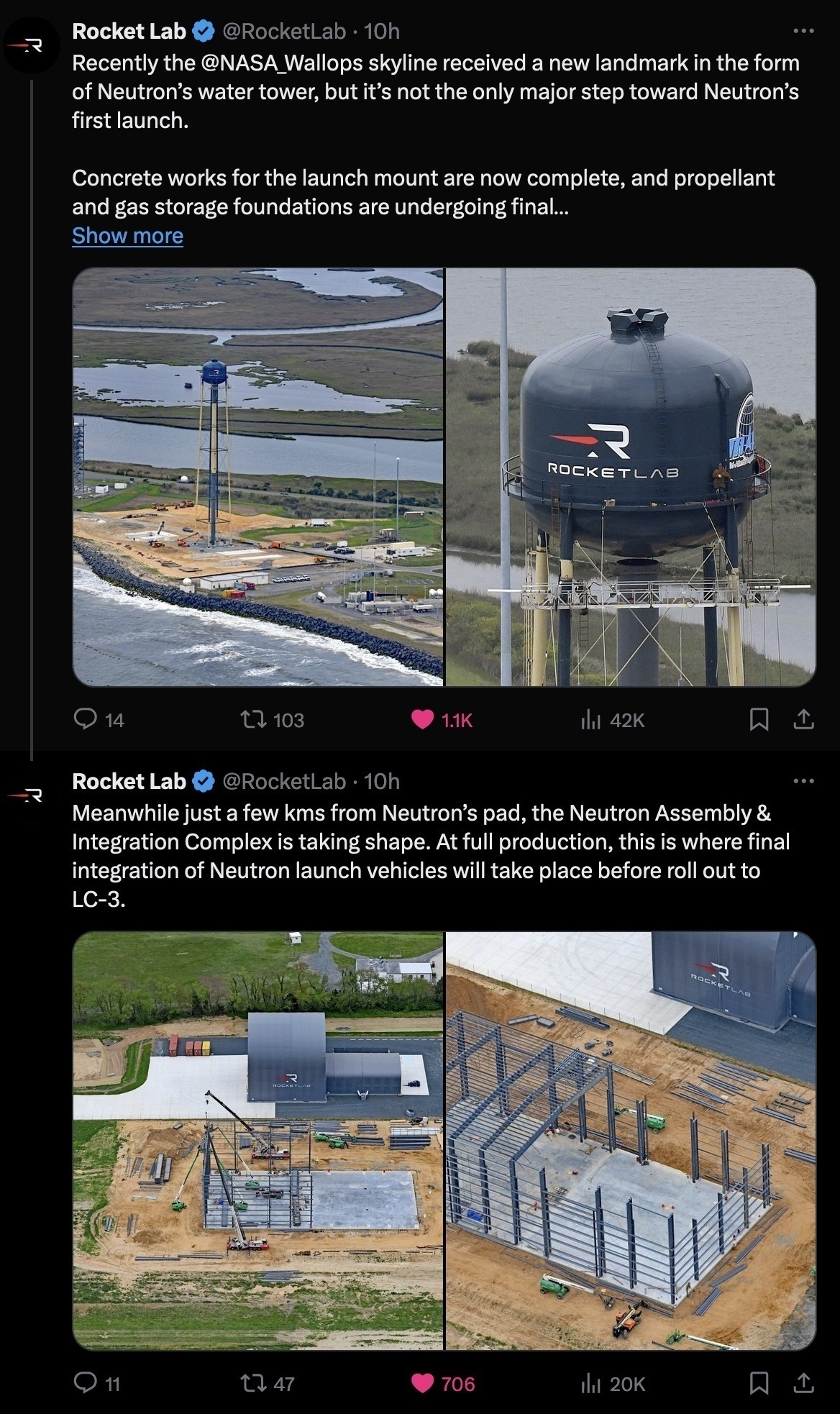
May 6, 2024 | Q1 2024 Investor Update

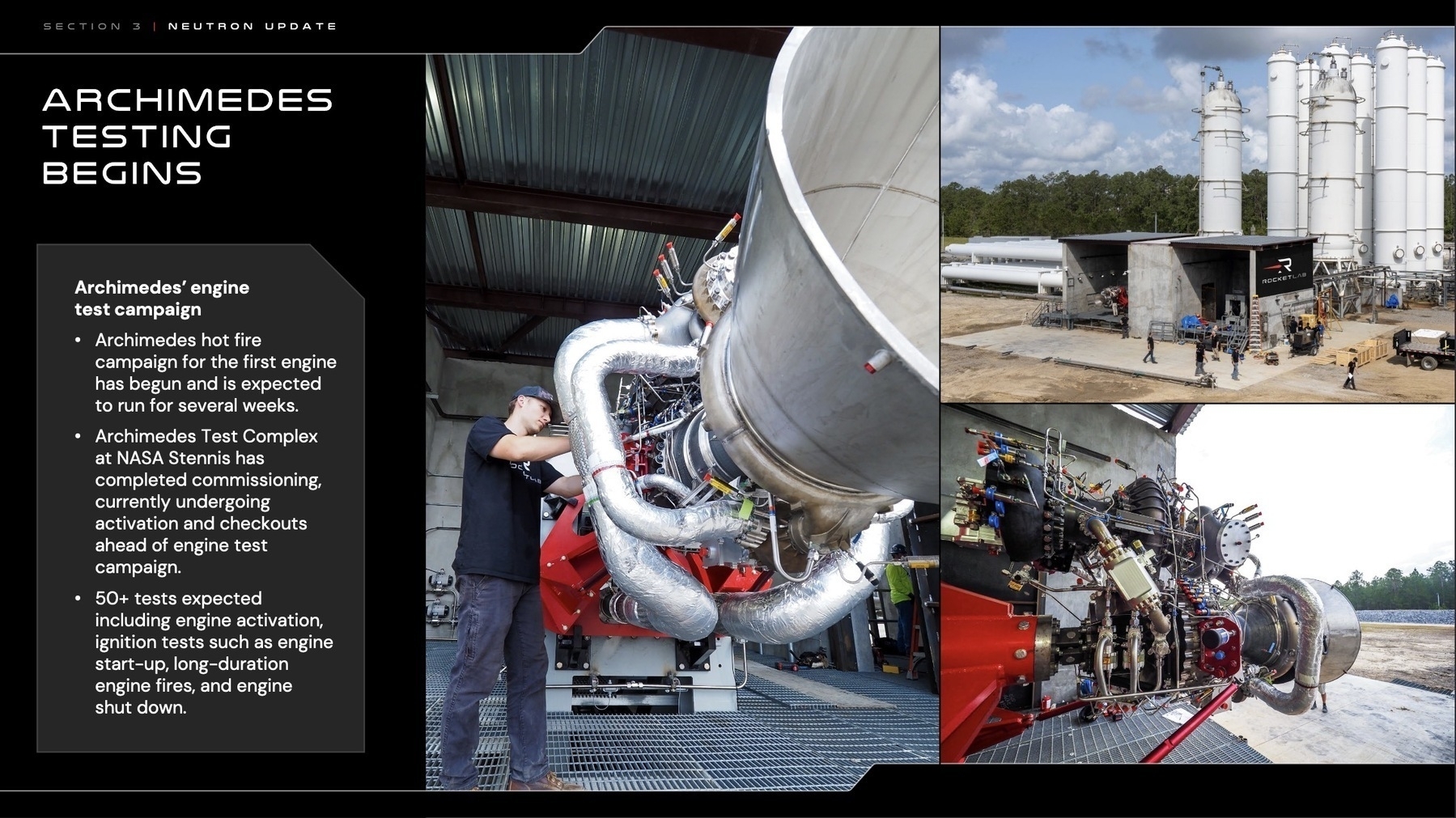
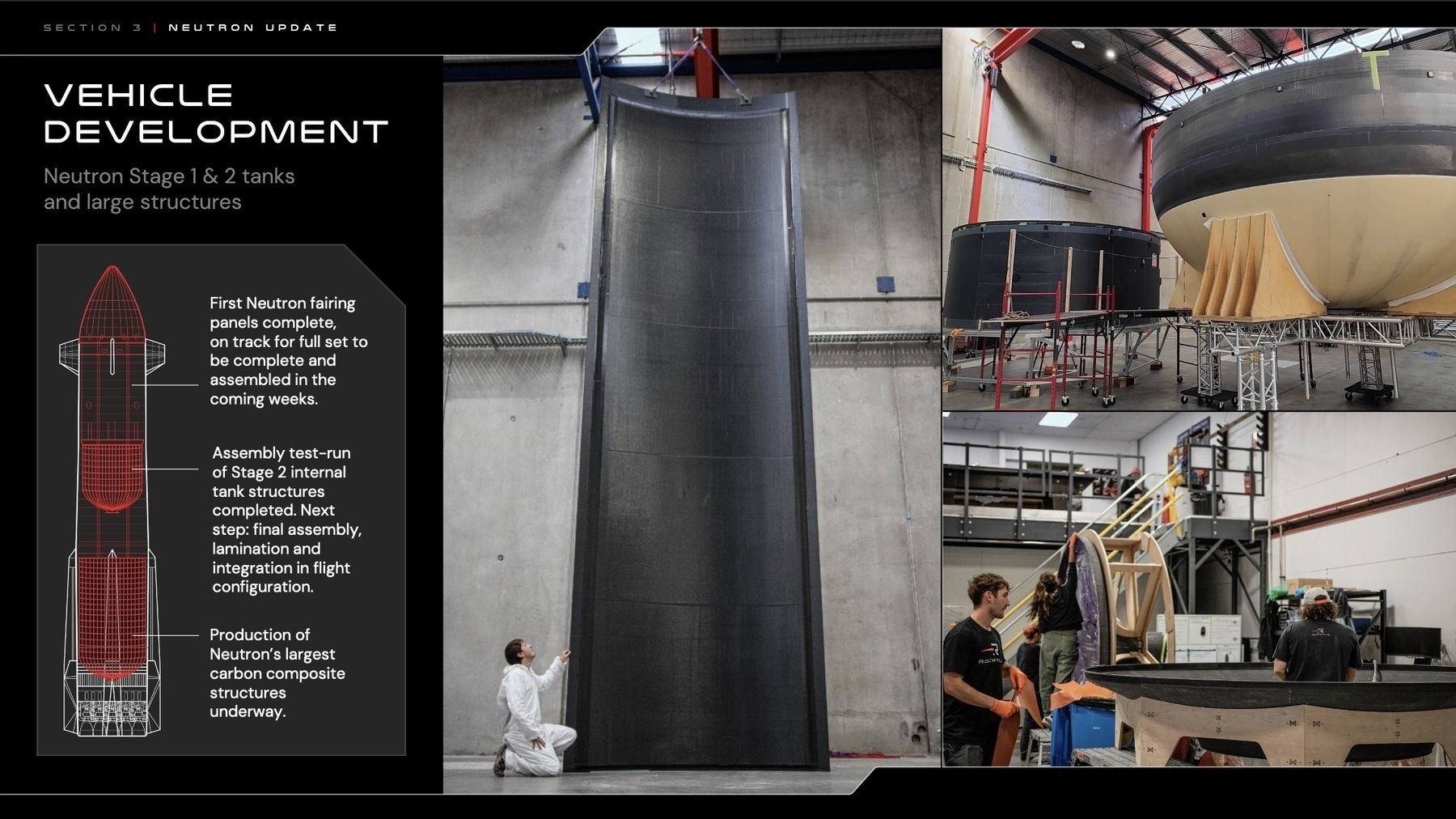
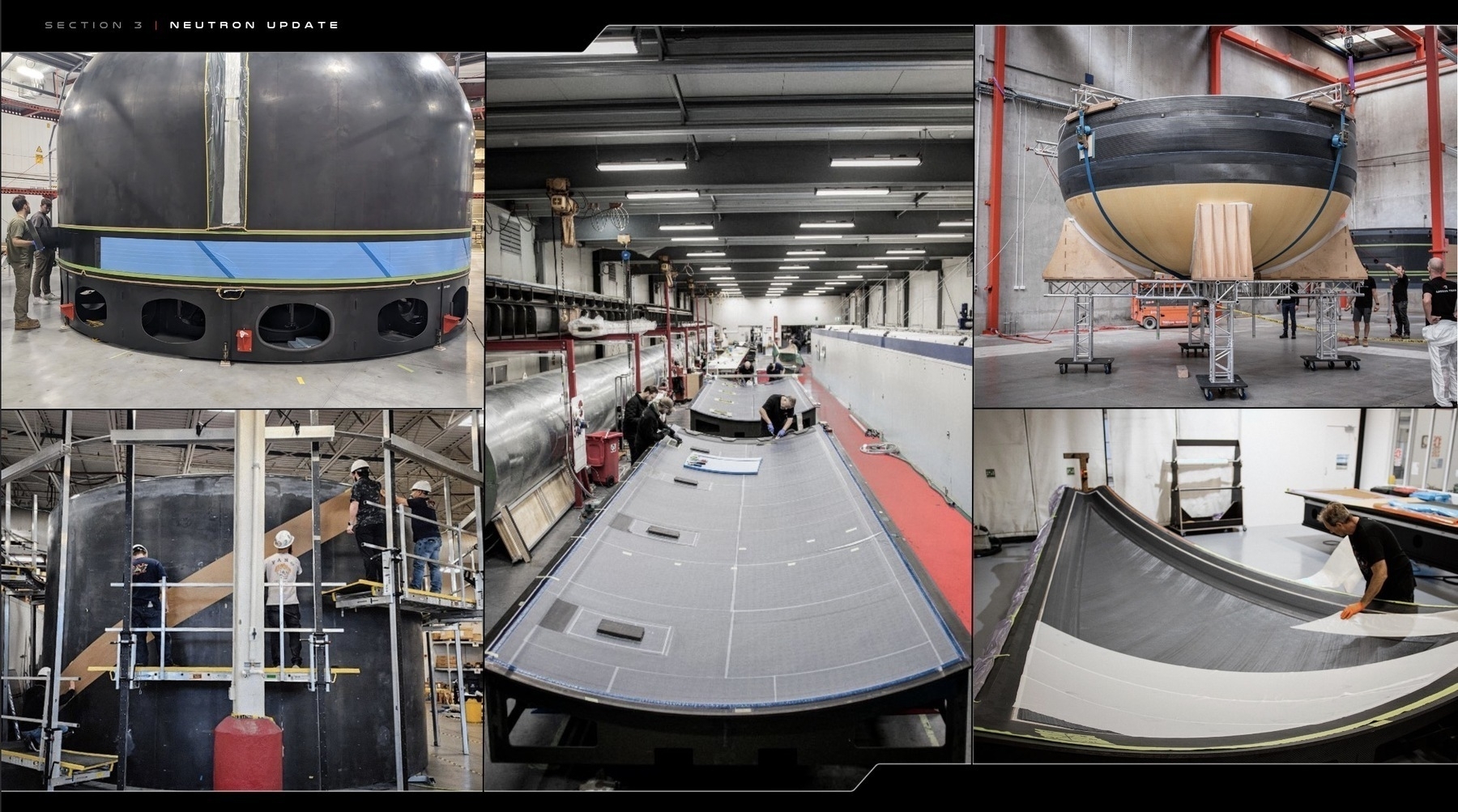
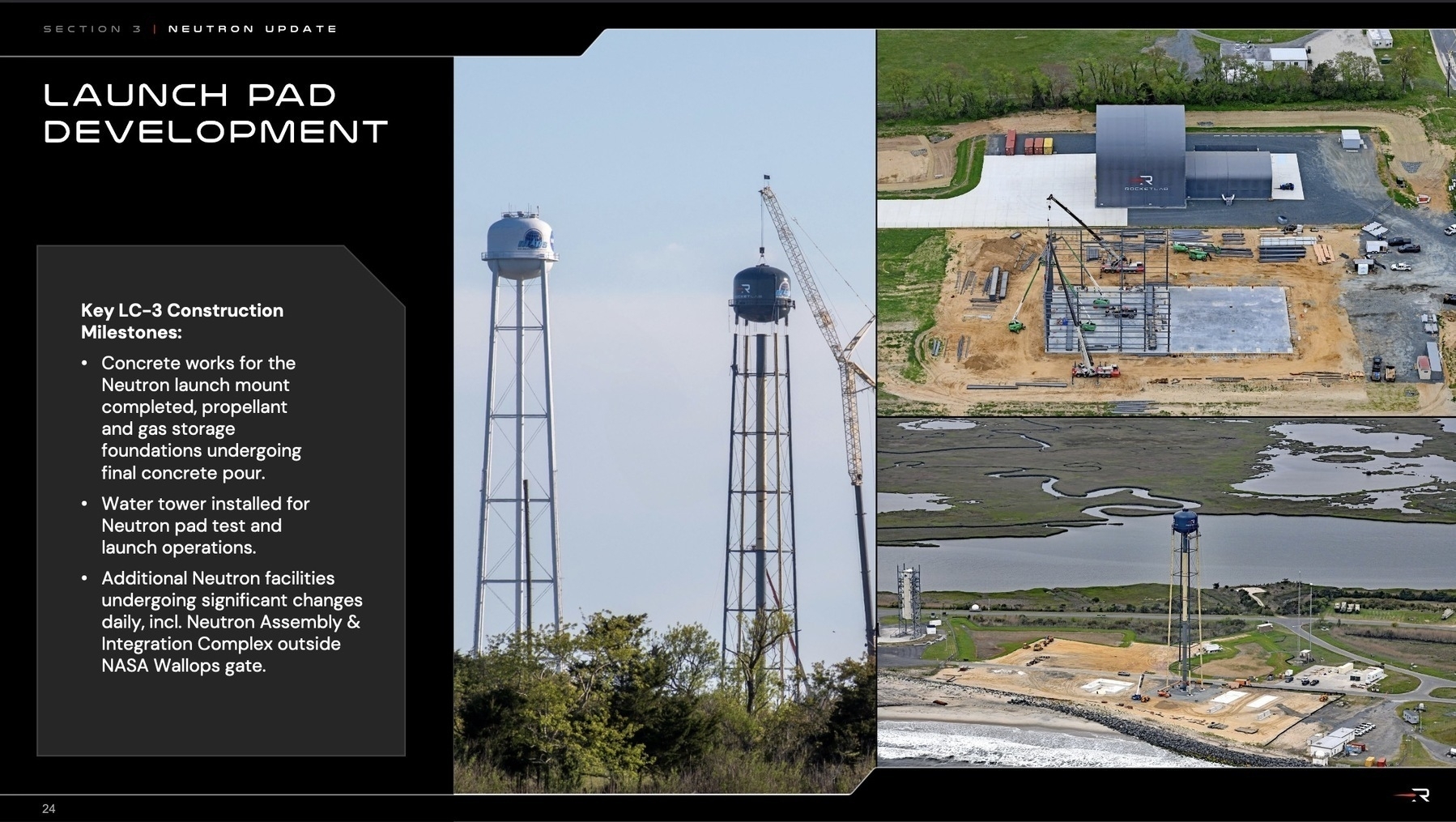
May 6, 2024 | Tweet by Rocket Lab
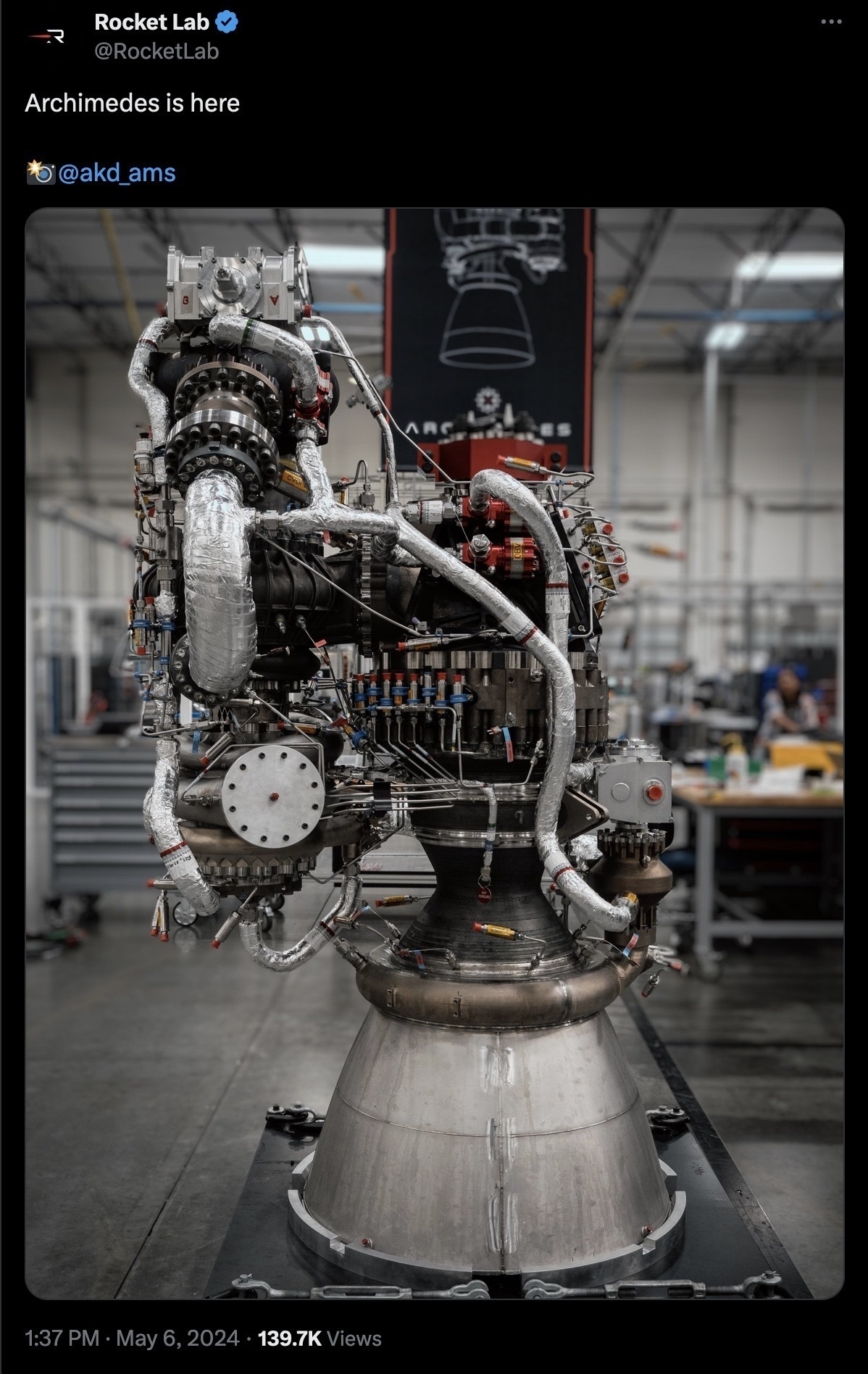
April 22, 2024 | Tweets by Rocket Lab


March 18, 2024 | Tweets by Rocket Lab





February 27, 2024 | Q4 & Full Year 2023 Investor Update







Some interesting Rocket Lab numbers as we head into 2024:
And then there are the recent additions on the ground:
There’s more of course. This doesn’t even touch on progress made on Neutron. And the company has other things cooking which haven’t been shared just yet.
Many people, even those who follow the industry, still think of Rocket Lab as simply some scrappy small launch provider. Nearly everyone massively over-indexes on launch when they evaluate the company. While launch is the sexiest part of the business for observers, it’s most important as an enabler and differentiator that truly allows the space systems side and (ultimately) space services/applications side of the business to shine rather than the ultimate business objective itself. This nugget from their 2022 investor day event says it all:
“…more than 38% of globally addressable launches in 2021 had spacecraft on them featuring technology created by Rocket Lab companies. Even if it’s not launched on Electron, if it’s in space, there’s a good chance it has a Rocket Lab logo. Rocket Lab, more than just rockets in this lab.
And that is how you build a multi-generational space company.
Rocket Lab updated the project milestones on their Neutron page to move the first Archimedes engine hot fire from the last milestone of 2023 to the first slot in 2024. While this is a bit of a slip it seems to be a minor one and not real cause for concern at the moment. Rocket development projects without timeline adjustments just aren’t a thing so adjustments should be expected along the way. Rocket Lab is still very well positioned to make the required progress in the year ahead as you can see from my roundup of 2023 development updates. Notably, they did not push launch into 2025 while making their edits. Do I think the first Neutron launch is likely to slip to 2025? Yes, but I think most analysts assumed that would be the case when Rocket Lab committed to their admittedly aggressive timeline. One milestone slip does not necessarily doom a timeline, however, and Rocket Lab might still pull it off. I expect clear guidance from them on that in the new year.
I’ve updated my earlier post on the milestones to reflect this update.

Rocket Lab has a very cool slider on their Neutron site that illustrates the key milestones in Neutron’s development. I’ve extracted the text from it for easier reading but do check it out.
Stage 2 Build COMPLETE: First full-scale carbon composite tank built using advanced manufacturing methods
Structural and Cryogenic Testing Neutron’s carbon composite second stage to complete a barrage of structural tests in preparation for flight.
Flight Mechanisms Test Program Testing of critical flight mechanisms including separation systems, fairing actuation, control surfaces and actuators.
Archimedes Engine Build First Archimedes development engine completed.
Hardware-in-the-Loop Flight to Orbit Testing of all avionics and communications devices with critical onboard software and GNC algorithms.
First Archimedes Engine Hot Fire Archimedes to breathe fire at Rocket Lab’s Propulsion Test Complex within NASA Stennis Space Center.
Stage 1 Build Full-scale carbon composite stage 1 tank built using advanced manufacturing methods.
Stage 2 Static Fire Hot fire exercising the Archimedes engine and all second stage systems. Testing like we would fly.
Stage 1 Static Fire Hot fire exercising the cluster of 9 x Archimedes engine and all first stage systems. Testing like we would fly.
Launch Complex 3 Complete Neutron’s launch site at the Mid-Atlantic Regional Spaceport within NASA’s Wallops Flight Facility in Virginia complete.
Final Integration Full flight vehicle complete and ready for flight.
Wet Dress Rehearsal Final systems checks before first launch.
LAUNCH! Neutron will take to the skies, ushering in a new era of U.S. space access.
Rocket Lab just dropped a couple of surprising, and very cool announcements:
Rocket Lab Rocket Lab, today announced it has accelerated its next recovery mission. The ‘We Love the Nightlife’ mission, scheduled for lift-off today, will now fly on a recovery-configured Electron rocket. For the first time, Rocket Lab will also launch a pre-flown Rutherford engine, a significant milestone in the program to evolve Electron into a reusable rocket.
…The ‘We Love the Nightlife’ mission was previously scheduled for launch earlier this month, and was initially not destined to be a recovery mission, but low ignitor pressure on a single engine during an initial launch attempt required the team to stand down and conduct further analysis. To keep the mission on schedule, and also expedite Rocket Lab’s reusability efforts the fairing, with Capella payload integrated within, was swapped onto the next available recovery-configured first stage in Rocket Lab’s production line.
For launch livestreams and other info check out the “We Love the Nightlife” mission post.
Rocket Lab presented at the Bank of America Virtual SMID Conference yesterday. You can watch the recording here. Some quick notes:
Peter Beck, CEO of Rocket Lab, joined The Business of Tech podcast to discuss Electron resuability.
Notable discussion points:
The Long Beach Business Journal just published an interesting piece on Rocket Lab’s recent acquisition of Virgin Orbit’s manufacturing facility and equipment that sheds a little more light on how the company plans to put it all to use:
The company’s current headquarters, which includes office space as well as manufacturing operations, is about 60,000 square feet, Spice said. The former Virgin Orbit building—one of the oldest at Douglas Park—is more than twice the size at 140,000 square feet.
The Long Beach expansion will allow the company to further compartmentalize its operations across its various facilities. As it is, the headquarters factory floor is where the company builds out its avionics and propulsion systems—Electron’s Rutherford engines and Neutron’s Archimedes engines.
The Rutherfords are then sent to Rocket Lab’s New Zealand facility, where they are integrated into the Electron rockets. The company has a facility under construction near its Virginia launch complex, where the Archimedes engines will be sent for Neutron construction.
In addition to launch services aboard its Electron rocket (and Neutron in the future), the company has its space systems division, which focuses on the design and construction of spacecraft for other companies and organizations. Space systems also is located within the company’s headquarters.
The bulk of engine manufacturing and assembly will be moved into the new, larger Long Beach facility, which will allow Rocket Lab to expand its space systems division at its headquarters, Spice said.
While unfortunate for Virgin Orbit the positive impact for Rocket Lab is just off the charts
Rocket Lab placed the winning bid of $16.1 million for Virgin Orbit’s Douglas Park headquarters as well as much of the equipment in it, which Spice said would have cost upward $100 million if it were bought new. On top of that, Spice noted that, once ordered, it can take over a year to receive these complex pieces of equipment such as large 3D printers and state-of-the-art milling machines.
“For every one piece of equipment we have here, there might be five over there,” Spice said, comparing his company’s headquarters to the old Virgin Orbit facility. “I think they took a ‘Jurassic Park, spare no expense’ approach.”
And on top of all this:
In addition to space and equipment, the Virgin Orbit breakdown provided Rocket Lab dozens of new employees as well as multiple contracts previously awarded to the failed company, Spice said.
The space business is incredibly challenging on all fronts but Rocket Lab continues to create its own tailwinds as it both executes and continues to aggressively stretch every dollar as it pursues growth.